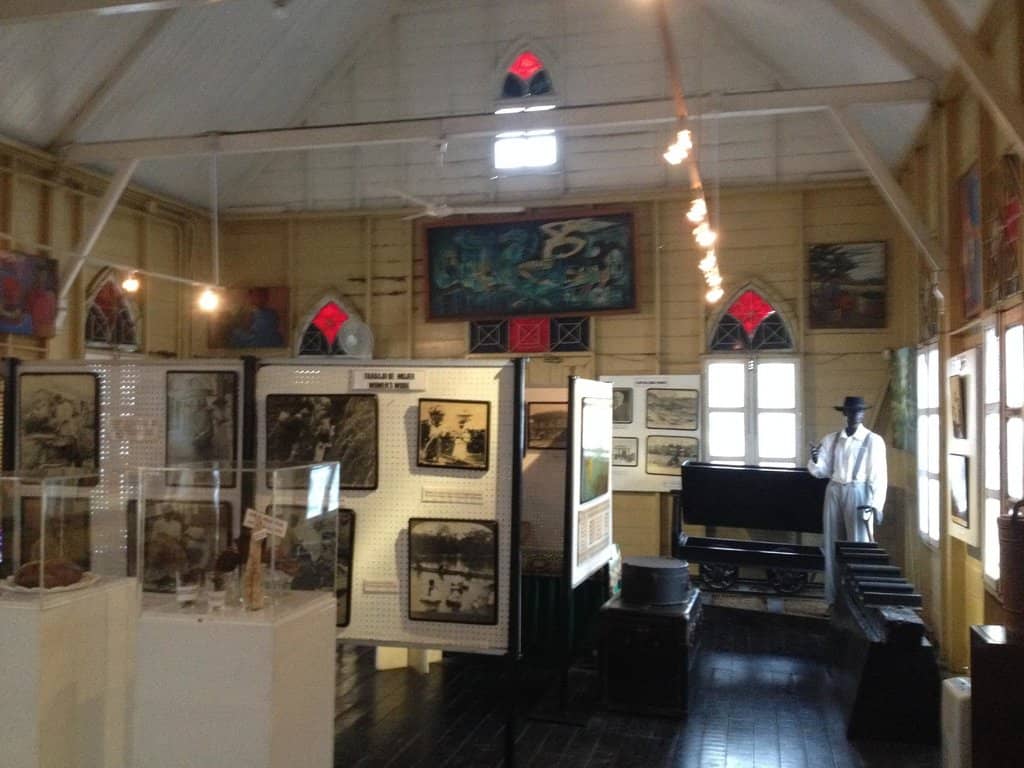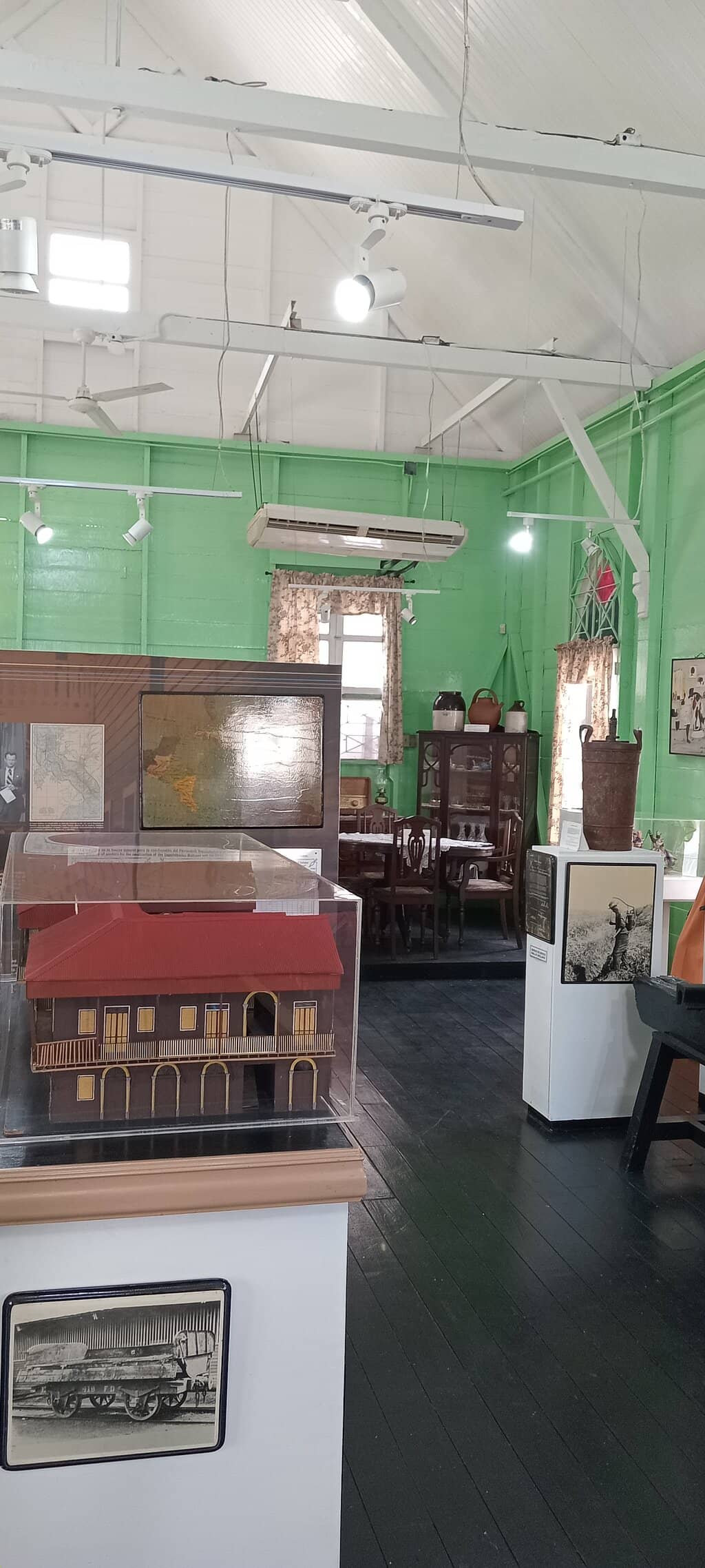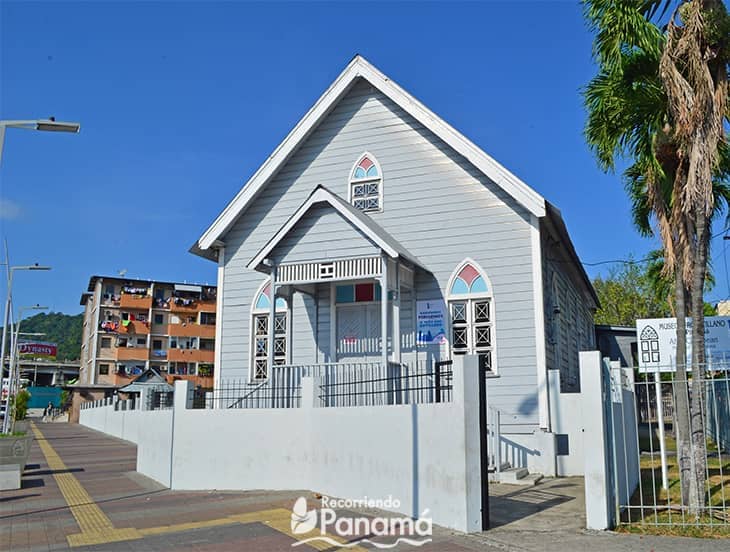
Museo Afroantillano de Panamá
Discover the vital history of Antillean immigrants in Panama, their role in building the canal, and their fight for equality.

Highlights
Must-see attractions

Social
From TikTok & Reddit
Best Time
Fewer crowds, more staff interaction

Museo Afroantillano de Panamá
Best Time
Fewer crowds, more staff interaction

Highlights
Must-see attractions
Discover the vital history of Antillean immigrants in Panama, their role in building the canal, and their fight for equality.
"Small but mighty, this museum offers an incredibly enriching experience with passionate staff."

⏳ Allow ample time
Small museum, but rich details. You can spend hours absorbing the history!
🗣️ Engage with staff
They are incredibly knowledgeable and passionate about sharing stories.

Highlights
Discover the most iconic attractions and experiences

Antillean Immigration Story
Discover the journey of Caribbean workers who built Panama, their challenges, and their lasting impact.

Struggle Against Discrimination
Learn about the fight for equality and integration faced by the Afro-Antillean community in Panama.

Canal Construction Role
Understand the crucial, often overlooked, role of Antillean laborers in the Panama Canal's creation.
Plans like a pro.
Thinks like you
Planning Your Visit
Understand the Scale
Embrace the Stories
Best Times
Insider Tips
from TikTok, Instagram & Reddit
What is a must in Panama City?
⏳ Allow ample time
Small museum, but rich details. You can spend hours absorbing the history!
🗣️ Engage with staff
They are incredibly knowledgeable and passionate about sharing stories.
🗣️ Language is adaptable
Even with a language barrier, communication is possible and enriching.
⛪ Historic Building
The museum is housed in a beautiful old wooden church worth preserving.
Tips
from all over the internet
⏳ Allow ample time
Small museum, but rich details. You can spend hours absorbing the history!
🗣️ Engage with staff
They are incredibly knowledgeable and passionate about sharing stories.
🗣️ Language is adaptable
Even with a language barrier, communication is possible and enriching.
⛪ Historic Building
The museum is housed in a beautiful old wooden church worth preserving.
💰 Consider a small fee
The current fee is low; some feel it could be increased to support preservation.
What Travellers Say
Reviews Summary
Visitors consistently praise the Museo Afroantillano de Panamá for its illuminating portrayal of the Afro-Antillean community's vital role in Panamanian history, particularly during the canal's construction. Despite its small size, the museum is lauded for its depth of information and the exceptional passion and knowledge of its staff, who make the experience incredibly enriching. The historic building adds to its charm, though some note its condition.
"Very small museum but illuminating about Panamanian history. I wrongly assumed that African influence was mainly due to the slaves brought by Spaniards. The museum illustrates in a concise and graphical way the impact of Caribbean immigrants in Panama, mainly, workers from Jamaica, Barbados, and other islands that came to work in the French and American canals. It also tells a lot about the struggle against discrimination and the path for integration in the society. The women taking care of the museum make a great work and are very supportive, providing extra details."
Roberto
"I had the best time at the Museo Afrantillano!! This place has my heart. Despite being a small museum I spent more than four hours looking at all of the exhibits and asking Jorge and Miriam so many questions. This was truly an enriching experience and Jorge and Miriam are incredibly knowledgeable. Visiting this museum was the highlight of my trip and I highly recommend a visit!"
Chelsey Birgisdóttir
"Small but mighty and so much history.. (the building is in really poor shape). There's a small fee to visit, which I honestly think it can be increased a bit.. but otherwise really informative and learned so much. You can request a guided tour although it's mostly in Spanish, but everything else is in English so if you're a Spanish speaker, I would recommend the guided tour. A few of them spoke limited English and we spoke limited Spanish, but we were somehow able to communicate and understand each other...
We wanted to visit Mercado San Felipe Neri and the fish market afterwards and they were so helpful even with the language barrier, we were able to communicate and understand each other!"
Christabella
What People Like
What People Dislike
Frequently Asked Questions
🚇 🗺️ Getting There
The museum is located in Panama City. While specific public transport details aren't widely shared, it's often visited in conjunction with nearby attractions like Mercado San Felipe Neri, suggesting it's accessible by local buses or taxis.
It's situated in an old wooden church, which is a distinctive landmark. It's often mentioned alongside other local markets and attractions, making it a point of interest within the city.
Many visitors use taxis or ride-sharing apps for convenience. Local buses are also an option for budget travelers, though they can be more complex to navigate.
🎫 🎫 Tickets & Entry
Entry is typically free, though some visitors suggest a small fee could be increased to support the museum's upkeep.
Advance booking is generally not required as entry is often free. It's best to check their official channels if available, but walk-ins are usually welcome.
Specific hours can vary, but it's often visited during daytime hours. It's advisable to confirm current operating times before your visit, especially on weekends or holidays.
During certain periods, masks may be required for entry, as noted by some visitors. It's always a good idea to check for any current health and safety guidelines.
🎫 🧭 Onsite Experience
Despite its small size, visitors often spend several hours here due to the depth of information and engaging exhibits. The staff's willingness to share details can extend your visit.
The museum offers a valuable historical perspective that can be educational for older children. The engaging stories and visual displays can capture their attention.
Photography policies can vary. It's best to ask permission from the staff before taking pictures to ensure you comply with their guidelines.
The museum is housed in a historic wooden church, which is a significant part of its charm and historical context.
Guided tours are available, though they are primarily in Spanish. However, exhibits are also in English, and staff can often communicate effectively across language barriers.
📸 📸 Photography
The historic wooden church building itself offers great exterior shots. Inside, the exhibits provide rich visual storytelling, but always ask permission before photographing.
It's recommended to ask the museum staff for permission before taking photos of the exhibits to respect their policies.
The unique architecture of the old church and the detailed displays of historical artifacts and documents are often highlighted by visitors.
For Different Travelers
Tailored advice for your travel style
👨👩👧 Families with Kids
Key recommendations for families:
* Engage the kids: Encourage them to ask questions and interact with the staff, who are very welcoming.
* Focus on stories: Highlight the narratives of resilience and contribution, which can be inspiring.
* Combine with nearby sights: Visit the Mercado San Felipe Neri or the fish market afterward for a broader cultural experience.
📚 History Buffs & Cultural Explorers
What to expect:
* In-depth exhibits: Detailed information presented concisely.
* Passionate staff: Knowledgeable guides who can offer nuanced perspectives.
* Historical context: Understand the broader narrative of Panama's development through the lens of its Afro-Antillean population.
Deep Dives
In-depth insights and expert knowledge
The Heart of Antillean History in Panama
Visitors often remark on the museum's ability to convey a vast amount of information in a concise and visually engaging manner. Exhibits delve into the social, economic, and political impact of the Antillean diaspora, including their struggles against discrimination and their persistent fight for civil rights and recognition. The staff, frequently praised for their passion and knowledge, act as invaluable guides, offering deeper insights and personal anecdotes that bring the history to life. This personal touch transforms a visit from a passive observation into an enriching, interactive experience, making the museum a must-visit for anyone seeking a deeper understanding of Panama's diverse heritage.
The museum's location within a historic wooden church adds another layer of significance, underscoring the importance of preserving these cultural landmarks. While the building itself may show signs of age, it serves as a poignant reminder of the community's enduring presence and history. The dedication of the women who care for the museum is frequently noted, as they ensure that the stories of the Afro-Antillean people are told with pride and accuracy.
Navigating Your Visit: Tips from Fellow Travelers
Communication is often highlighted as a positive aspect, even with potential language barriers. The staff's passion for Panamanian history transcends linguistic differences, and visitors have reported successful and meaningful interactions. While guided tours are primarily in Spanish, the main exhibits are in English, ensuring accessibility for a wider audience. Don't hesitate to ask questions; the staff's willingness to provide extra details is a recurring theme in reviews.
Consider the museum's setting: it's housed in a historic wooden church. This adds to its unique atmosphere and historical significance. While the entry fee is minimal, some visitors suggest it could be slightly increased to aid in the preservation of this important cultural site. Overall, the consensus is that this museum offers a profoundly illuminating and enriching experience, often cited as a highlight of trips to Panama City.



Social
from TikTok, Instagram & Reddit